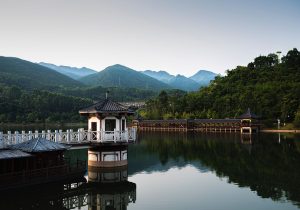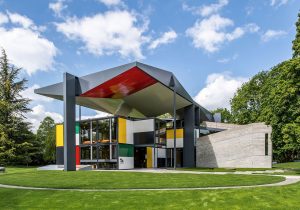
Human Beings and Landscape
In “The human being and landscape” Ivonne Walls talks about the connect ion of people with a landscape, and how architects and landscape architects must recognize the elements of the landscape and decide the best way to intervene.
Historically, mankind has had the need to interact with nature, with the landscapes that surround them and with the places they experience and travel to during their lives. The Earth has a great variety of natural landscapes, including mountains, deserts, coasts, and rivers where you can find distinctive features of geographical accidents produced by a natural process (cliffs, mountains, beaches, dunes, etc.), as well by man-made constructions that give character and identity to that particular place. Its shapes are molded by the forces of wind, waves, and rains that erode or build the natural environment, constantly changing its shape. Mankind generates a deep personal connection with a particular landscape and attributes a value to it that can be cultural, spiritual, aesthetic, economic, or a mixture of them.
Thus, we see that the Earth is dynamic. It is constantly moving and changing, transforming landscapes through a combination of environmental processes (such as floods and earthquakes) and human processes (such as mining and city building). Some of these changes are very slow and occur over millions of years, while others happen quickly. But arguably the most constant force for change is man, who has modified landscapes for housing, food, and other essentials for thousands of years. We cut down forests and change the shape of the land to raise animals and grow plants; we move mountains and divert rivers to build roads, cities, and towns. We even create new land on the sea in coastal areas to meet our needs. In fact, we have altered the landscapes so much that today there are very few left that are truly natural. And, as the world’s population increases, so does the demand for the Earth’s resources.
Aerial view of the cienega in Yucatan
Photography: Fernando Méndez Alfaro
These natural disturbances, as well as human demand for goods and services, have altered the world’s forest and grassland ecosystems. Human-landscape interactions have caused many original or endemic ecosystems to reach limits where their state has changed in undesirable and irreversible ways.
“Nature becomes landscape when man frames it” Le Corbusier
Based on this statement, architecture is an art and a craft capable of modifying, but at the same time improving and enriching the landscape, adapting it to human needs, respecting it and sticking to its unique and particular conditions. The human scale, as Le Corbusier affirmed, is the measure of all things, since the appreciation of the landscape resides in those who contemplate it. That is to say that somehow the landscape is made for and/or by mankind. Architects and landscape designers then have a fundamental mission: to recognize the elements that stand out of the landscape and decide the best way in which they can be intervened to create a kind of scene that is capable of highlighting the personality and vocation of the environment.
“Architects and landscape designers have a fundamental mission: to recognize the elements that stand out of the landscape and decide the best way in which they can be intervened.”

Human intervention in nature
Photography: ag-zn – Pexels
In mankind’s repeated devotion to nature, the designer must consider the whimsical figures of mountains, rock formations, ships on the sea, buildings… It must be able to choose, rescue and emphasize the profiles cut out on the water and the silhouettes that stand out against the broken profile of cities whose backdrop is the sky, around which the rest is ordered. The distance and scale between the spectator and the elements used by the architect, whether built or found, whether buildings or mountains, dunes or deserts, will serve as raw material for the landscaper to create a space capable of moving and impacting the inhabitant, beyond its usefulness or transcendence.
Near or far, nature or artifice, large or small, the landscape composition must consider the relative size of things and recover their human scale and sustainability. For each composition of the landscape architecture is vital, even if it only participates to accentuate its grandeur or beauty, or to rescue what it has lost. It is work that results in the conservation of the essence of the place and allows it to be recognized as one’s own.
Because landscape is also an extension of man, a living being that is a reflection of his history, home to his beliefs, and protector of his customs and traditions. The fundamental task of designers will be to understand how to create, maintain, and restore those landscapes under a changing and sometimes uncertain environment. It will involve creating management strategies that help maximize and maintain their integrity, function, and resilience to the circumstances of the present, integrating information on the effects of multiple stressors that affect species, populations, and ecosystems. The challenge is monumental, but as Le Corbusier himself said: “Everything works, everything is touching and everything is inexplicable”.
“The fundamental task of designers will be to understand how to create, maintain, and restore landscapes under a changing and sometimes uncertain environment.”
The Le Corbusier pavilion of the Heidi Weber Museum
Photography: Museum für Gestaltung , CC B Y- S A 4 . 0 , via Wikimedia Commons













